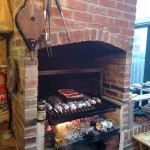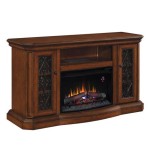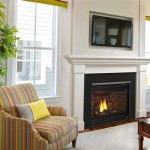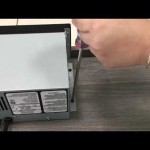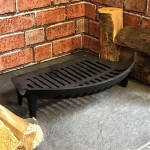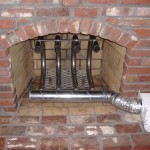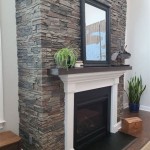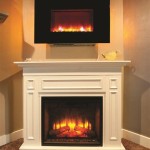Fireplace Surround Vents: Optimizing Heat Circulation and Safety
Fireplace surround vents are an integral, yet often overlooked, component of a functional and safe fireplace system. These vents play a crucial role in regulating heat distribution, preventing overheating, and maintaining the structural integrity of the fireplace surround itself. Understanding the purpose, types, and importance of fireplace surround vents is essential for homeowners looking to maximize the efficiency and safety of their fireplaces.
In essence, fireplace surround vents are openings strategically positioned within the fireplace surround, usually near the top and bottom. These openings facilitate the convection of air, allowing cool air to enter, be heated by the fire, and then exit back into the room. This process is vital for efficiently dispersing heat from the firebox throughout the living space, creating a more comfortable and energy-efficient heating experience.
The absence of properly functioning or adequately sized surround vents can lead to a multitude of problems. Overheating within the firebox area can damage the surround materials, potentially causing warping, cracking, or even fire hazards. Inadequate air circulation also reduces the overall heating effectiveness of the fireplace, leading to wasted energy and a less comfortable environment. Therefore, proper vent design, placement, and maintenance are critical for a safely and efficiently operating fireplace.
Understanding the Mechanics of Heat Convection
The primary function of fireplace surround vents revolves around the principle of convection. Convection is the transfer of heat through the movement of fluids, in this case, air. A fireplace without adequate vents traps hot air against the surround materials, leading to inefficient heating and potential damage.
The process begins with cool air entering the lower vents of the surround. As this air comes into contact with the heated surfaces of the firebox and surrounding materials, it absorbs heat and becomes less dense. This less dense, warmer air naturally rises, exiting the fireplace through the upper vents. As the warm air exits, it circulates into the room, raising the overall ambient temperature.
The continuous cycle of cool air entering, heating, rising, and exiting through the vents is what effectively distributes heat throughout the room. The vents act as pathways for this convective airflow, ensuring that the heat generated by the fire is not simply trapped within the fireplace structure.
The efficacy of this convective process depends on several factors, including the size and placement of the vents, the insulation around the firebox, and the overall design of the fireplace surround. A well-designed system will maximize airflow and minimize heat loss, resulting in a more efficient and comfortable heating experience.
The amount of heat that can be effectively transferred through convection is further dependent on the design and materials used for the fireplace itself. Certain materials, for example, conduct heat more readily than others, which can amplify the convective properties of the surround. Similarly, the size of the firebox and the intensity of the fire also play a significant role in the overall heat output and the effectiveness of the vent system.
Types of Fireplace Surround Vents
Fireplace surround vents are available in a variety of styles, materials, and sizes to accommodate different fireplace designs and aesthetic preferences. The types of vents can generally be categorized by their material, their design, and their functionality.
Material: The most common materials used for fireplace surround vents include metal (such as steel, cast iron, or aluminum), wood, and occasionally stone or tile. Metal vents are prized for their durability and heat resistance, while wood vents offer a more traditional and decorative appeal. Stone and tile vents are often integrated directly into the fireplace surround for a seamless and elegant look.
Design: Vent designs range from simple, utilitarian openings to elaborate, decorative grilles. Some vents feature adjustable louvers that allow homeowners to control the airflow. Others are designed with intricate patterns that enhance the aesthetic appeal of the fireplace. Choosing the right design depends on the desired look as well as the required airflow capacity.
Functionality: While all fireplace surround vents serve the basic function of facilitating airflow, some vents are designed with additional features. For example, some vents include air filters that help to remove dust and pollen from the air circulating through the fireplace. Other vents are designed to be removable for easy cleaning and maintenance.
Different types of fireplaces also dictate the necessary type of surround vent. For example, a gas fireplace often requires vents that are sized and positioned differently than those required for a wood-burning fireplace. This is due to the differences in heat output and combustion characteristics between the two types of fireplaces.
Furthermore, the size and placement of the vents should be carefully considered based on the dimensions of the fireplace and the room in which it is located. Larger fireplaces typically require larger and more numerous vents to ensure adequate airflow and prevent overheating. Likewise, rooms with poor natural ventilation may also benefit from larger or more strategically placed vents to improve heat distribution.
Safety Considerations and Maintenance
Maintaining fireplace surround vents is crucial for both the safety and efficiency of the fireplace. Over time, vents can become clogged with dust, debris, or even bird nests, which can restrict airflow and increase the risk of overheating. Regular cleaning and inspection are essential to ensure that the vents are functioning properly.
Cleaning: Vents should be cleaned at least once a year, preferably before the start of the heating season. The cleaning process typically involves removing the vent covers and either vacuuming or brushing away any accumulated debris. In some cases, it may be necessary to use a mild detergent and warm water to remove stubborn dirt or grime.
Inspection: In addition to cleaning, vents should also be regularly inspected for any signs of damage or deterioration. Cracks, rust, or broken louvers can compromise the functionality of the vents and may require repair or replacement. It is also important to ensure that the vents are securely attached to the fireplace surround to prevent them from falling out or becoming dislodged.
Furthermore, it is crucial to ensure that the area around the vents is kept clear of any obstructions, such as furniture, curtains, or other flammable materials. These obstructions can block airflow and increase the risk of overheating or fire.
Another important safety consideration is the type of materials used for the vents. Vents made from flammable materials, such as certain types of wood or plastic, should be avoided, as they can pose a fire hazard. Metal vents are generally the safest option, as they are non-combustible and can withstand high temperatures.
Finally, it is always recommended to consult with a qualified fireplace professional when installing or maintaining fireplace surround vents. A professional can assess the specific needs of the fireplace and recommend the appropriate type and size of vents to ensure optimal performance and safety. This is especially important if any modifications are being made to the fireplace surround, as incorrect vent placement or sizing can have serious consequences.
In summary, fireplace surround vents are a critical component of a safe and efficient fireplace system. Understanding their function, types, and maintenance requirements is essential for homeowners who want to maximize the benefits of their fireplaces while minimizing the risks.
Properly functioning vents contribute to efficient heat distribution, prevent overheating, and ensure the structural integrity of the fireplace surround. By following these guidelines and seeking professional advice when needed, homeowners can enjoy a comfortable and safe heating experience.

Vented Vs B Vent Direct Free Dixie S

Remove Or Cover Up Old Heatilator Vents

Pave Tool Innovators Nt1029 Quick E Classic Vents Fireplace Drain Solutions 11 X 3 5 Single Quantity

What Are The Best Ways To Vent A Gas Fireplace Zoroast

What Are The Best Ways To Vent A Gas Fireplace Zoroast

Fireplace Makeover Reveal Beneath My Heart

Traditional Direct Vent Inserts White Mountain Hearth

Fireplace Venting What Homeowners Need To Know

What Is A Direct Vent Fireplace Vertical Chimney Care

Quick E Classic Vents Fireplace Drain Solutions 7 9 X 3 Backordered Eta 8 21 2025 4

